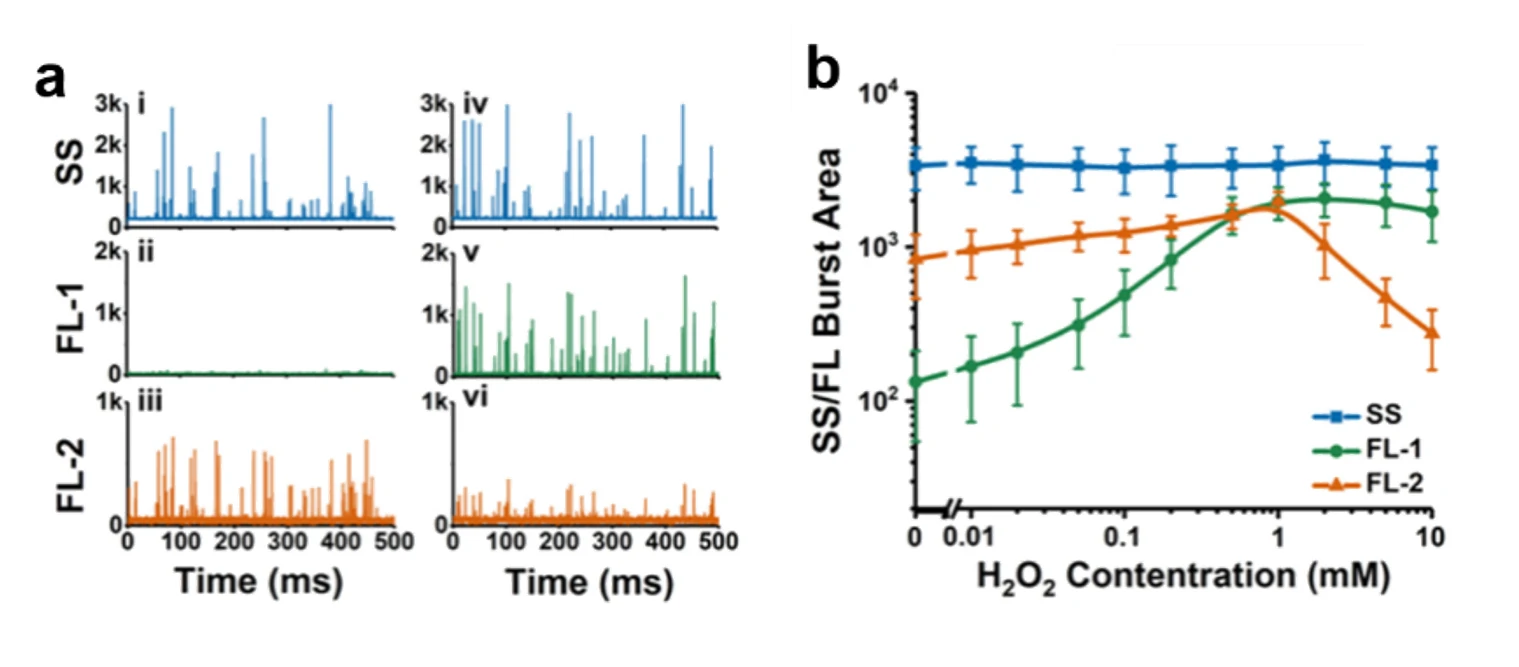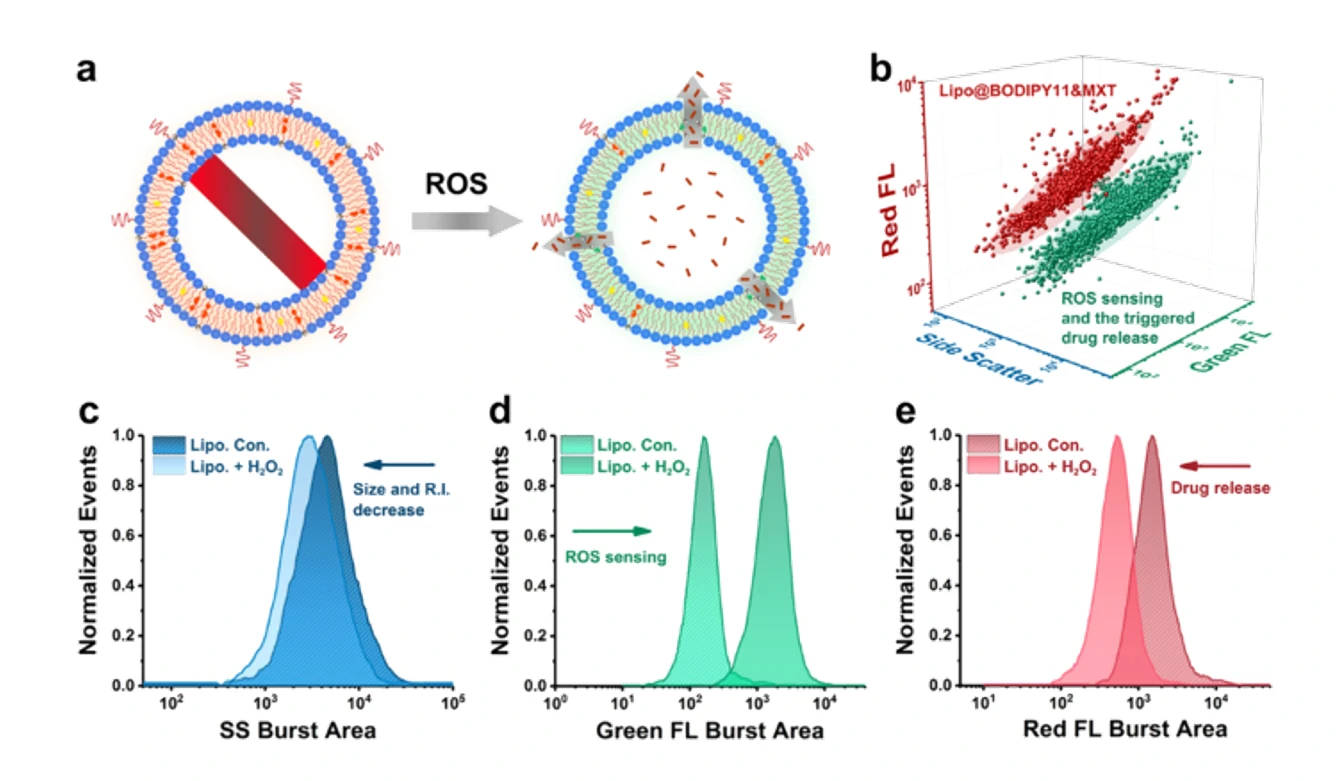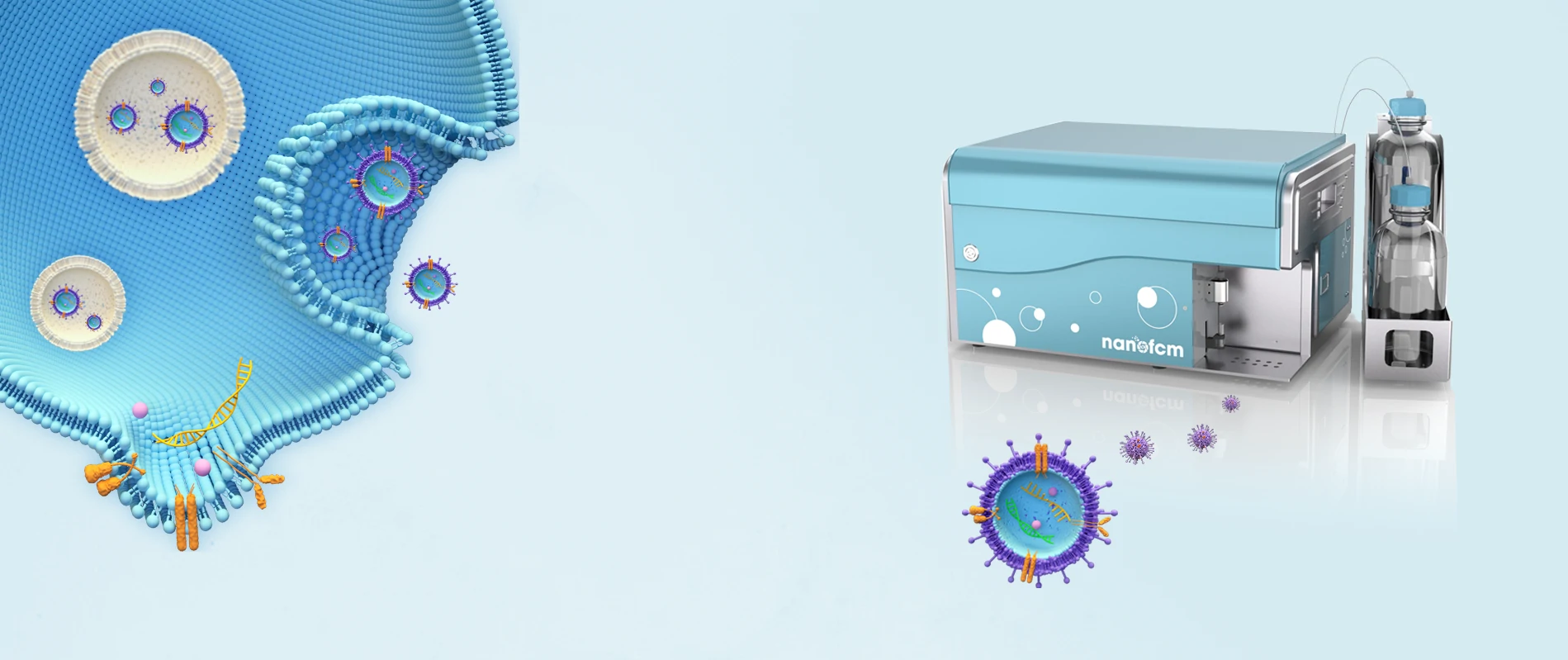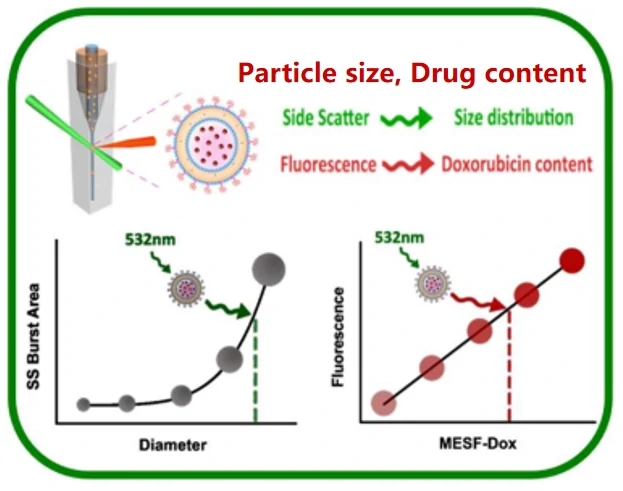Characterization of Theranostic Liposomes
Stimuli-responsive nanotheranostic systems, integrated with diagnostic and treatment features, have recently emerged and attracted much interest. However, most of the research focuses on the novelty of nanomaterials and undervalues the significance of single-particle characterization, which can provide detailed physical and biochemical information for performance evaluation and heterogeneity assessment. Due to the small particle size and low content of functional modules, high throughput and multiparameter analysis of individual stimuli-responsive nanoparticles remains challenging.
Here, using a reactive oxygen species (ROS)-responsive liposome (Lipo@BODIPY11) as an example, a strategy for characterizing theranostic nanoparticles with the Flow NanoAnalyzer was developed. Coincident detection of light scatter and fluorescence intensity provided a measurement for liposome quality assessment. Theranostic performance, referring to stimuli-responsive capability and drug release behavior upon ROS treatment, was obtained in minutes.

Figure 1. Flourescent analysis of Lipo@BODIPY11 by Flow NanoAnalyzer

Figure 2. Simultaneous detection of the ROS sensing and controlled drug release behavior of Lipo@BODIPY11&MXT by Flow NanoAnalyzer
This Flow NanoAnalyzer-based method provides a comprehensive approach for the proof-of-principle study, heterogeneity assessment, and quality control of biochemical nanosensors and theranostic nanomaterials.
Biosens. Bioelectron., 2019, 131, 185-192.







